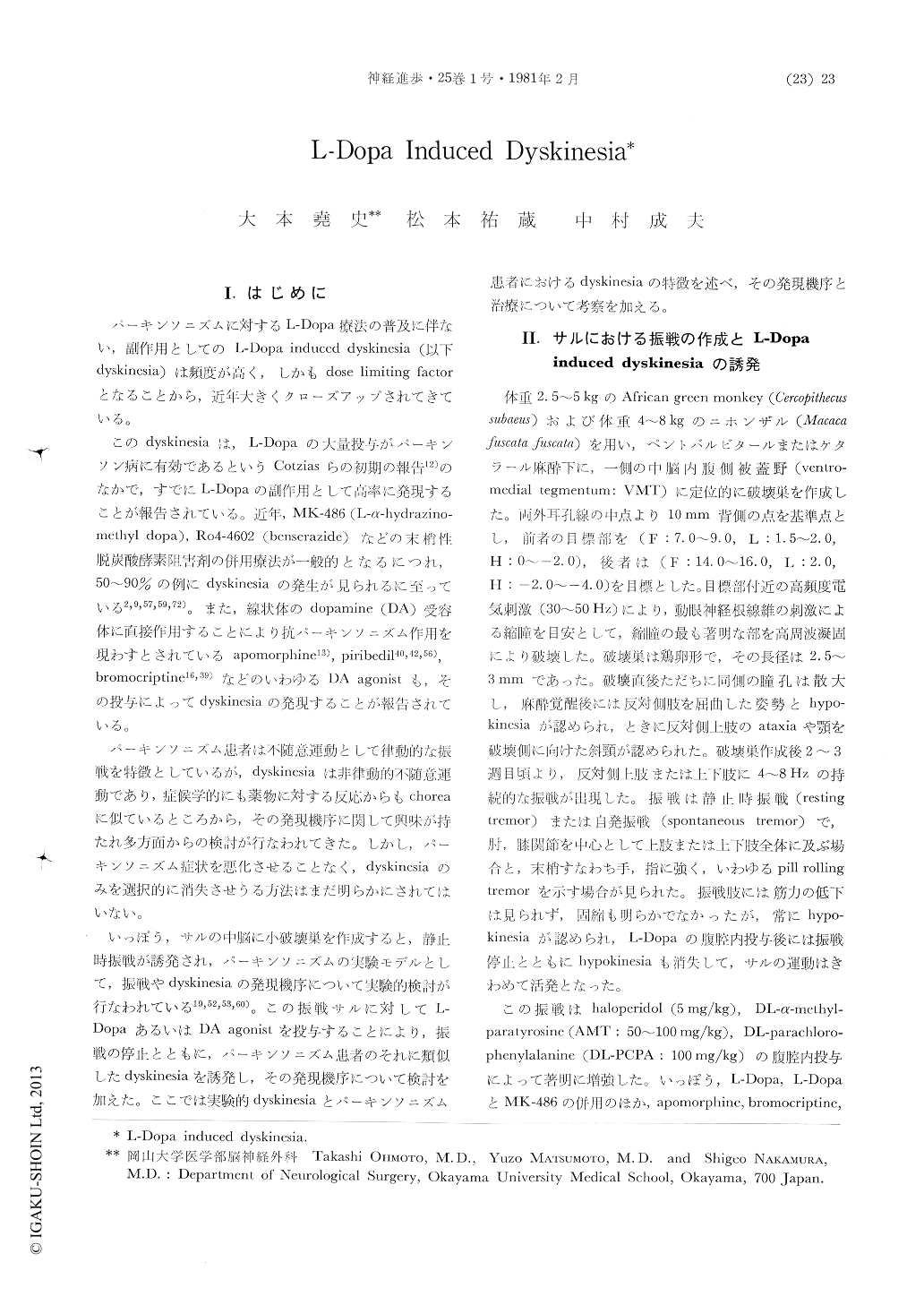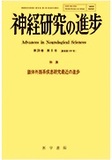Japanese
English
- 有料閲覧
- Abstract 文献概要
- 1ページ目 Look Inside
I.はじめに
パーキンソニズムに対するL-Dopa療法の普及に伴ない,副作用としてのL-Dopa induced dyskinesia(以下dyskinesia)は頻度が高く,しかもdose limiting factorとなることから,近年大きくクローズアップされてきている。
このdyskinesiaは,L-Dopaの大量投与がパーキンソン病に有効であるというCotziasらの初期の報告12)のなかで,すでにL-Dopaの副作用として高率に発現することが報告されている。近年,MK-486(L-α-hydrazinomethyl dopa),Ro4-4602(benserazide)などの末梢性脱炭酸酵素阻害剤の併用療法が一般的となるにつれ,50〜90%の例にdyskinesiaの発生が見られるに至っている2,9,57,59,72)。また,線状体のdopamine(DA)受容体に直接作用することにより抗パーキンソニズム作川を現わすとされているapomorphine13),piribedil40,42,56),bromocriptine16,39)などのいわゆるDA agonistも,その投与によってdyskinesiaの発現することが報告されている。
L-Dopa induced dyskinesias were developed in 30 (54.5%) out of 55 patients with Parkinsonism during chronic treatment of L-Dopa combined with MK-486. The dyskinesias consisted of buccolingual movements and choreo-athetoid movements of extremities. They seemed to be dosedependent because they were improved following reduction in dosage. Plasma dopa concentration was paralleled with the clinical status , and dyskinesias were observed at the peak dose in most patients. Sixteen out of 35 patients who had had ventrolateral thalamotomy developed dyskinesias of extremities on the side ipsilateral to the thalamotomy.

Copyright © 1981, Igaku-Shoin Ltd. All rights reserved.


